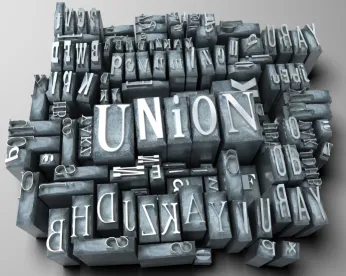Unionized workers wishing to rid themselves of continued union representation (and their employers) just got some very good news from the National Labor Relations Board (NLRB or Board) with the issuance of Johnson Controls, Inc., 368 NLRB No. 20 (July 3, 2019). The issue addressed there was how the NLRB will determine the wishes of employees concerning continued union representation where an employer has evidence that at least fifty percent of bargaining unit employees no longer desire to be represented by an incumbent union and the union possesses evidence that it has reacquired majority status. This is an important case because it revamps existing rules relating to an employer’s “anticipatory” withdrawal of recognition of a union and requires incumbent unions that have lost their majority to reestablish their majority status by way of a secret ballot NLRB election.
Here is how the system worked before Johnson Controls and how this process will work going forward.
The Law Before Johnson Controls — Last In Time Proof Wins
During most of the term of a collective bargaining agreement (CBA) that does not exceed three years in duration, there is an irrebuttable presumption that a union enjoys the support of a majority of the employees in the contractually-covered bargaining unit. During that period, employees are legally barred from raising a question concerning their union’s representative status (QCR) and their employer must recognize and bargain with that union or risk violating Section 8(a)(5) of the National Labor Relations Act (NLRA or Act). However, shortly before a CBA is about to expire, that presumption of majority status becomes rebuttable, meaning that contractually covered employees may raise a QCR. When an employer is presented with untainted, reliable proof that a majority of its employees no longer wishes to be represented by the union, the employer is free to refuse to negotiate a new CBA with the union, and is likewise free to announce its intention to withdraw recognition from the union after the CBA expires. Because that announced intention to withdraw is in anticipation of the contract’s expiration, it is commonly referred to as an “anticipatory” withdrawal of recognition. However, the employer could not act on that intention and actually withdraw recognition from the union until the parties’ CBA expired. Further, this anticipatory withdraw was only permitted if the employer’s otherwise lawful proof was the most recent word on the union’s majority status.
Unfortunately, an employer’s actual withdrawal in this scenario was not entirely free from legal risk. For example, between the time of an employer’s anticipatory withdrawal and a contract’s expiration, unions often mounted “re-organizing” campaigns, usually in the form of getting new union authorization cards signed, allowing the union to claim that it had reestablished its majority support. According to pre-Johnson Controls Board law, the union’s “last in time” proof of majority status superseded the employer’s prior proof, rendering the employer’s post contract expiration withdrawal unlawful and a violation of Section 8(a)(5), its earlier lawful anticipatory withdrawal notwithstanding. The remedy for such violations is a bargaining order that required an employer to re-recognize and bargain with a union and that again estopped workers wanting out of the union from raising a QCR during a “recognition” bar period of up to one year. Likewise, if during that recognition bar period, the employer and union agree on a new CBA, that new contract would again bar workers from ousting the union for a period of up to another three years, depending upon the duration of the new CBA. Accordingly, the Board’s prior treatment of an employer’s anticipatory withdrawal and a union’s ability to trump workers’ earlier proof of disaffection has proven to be a major obstacle to union workers wanting to go non-union.
The Board Recognizes Serious Defects In The Existing Law
The Johnson Controls Board reversed this existing law and established a new approach for dealing with anticipatory withdrawals for the following four reasons:
First, it observed that giving preemptive effect to the union’s “last in time” proof of majority support did not properly safeguard employee free choice because it automatically invalidated a worker’s prior recent indication of disaffection and because employees who signed both a petition of disaffection and a union card (dual signers) might not understand that when they signed a subsequent union card, they were effectively revoking their prior signature on a disaffection petition.
Second, the Board concluded the existing law failed to promote stable labor relations because a union was under no obligation to disclose to an employer that it had reacquired majority status prior to the employer’s actual withdrawal. Oftentimes, this lack of notice meant the employer would actually withdraw recognition in the honest belief that there was a valid QCR and that it was doing so lawfully, only to later find out that the union had gamed the system by regaining its majority status and allowed the employer to unwittingly violate the law and incur bargaining order liability.
Third, the existing law’s reliance on “last in time” proof and its treatment of dual signers was analytically unsound because an employer could act only on the evidence of the union’s loss of majority support it had while the union could (and oftentimes would) challenge the employer’s proof with after-acquired evidence which the employer did not possess. Moreover, the existing law created an unwarranted asymmetry in the treatment accorded proof of union support as compared with evidence of union disaffection because an employee’s union authorization card “cannot be effectively revoked in the absence of notification to the union prior to [a union’s] demand for recognition”, while, under existing law, an employee’s signature on a disaffection petition is effectively revoked by a pro-union counter signature in the absence of notification to the employer prior to withdrawal of recognition.
Finally, the Johnson Controls Board observed that the existing “last in time” law and its treatment of dual signers had been questioned by the D.C. Circuit and, in part, denied enforcement in a recent case, Scomas of Sausalito v. NLRB, 849 F.3d 1147 (D.C. Cir. 2017). In Scomas, the employer was unaware that a union had reacquired majority status by obtaining signed authorization cards from dual signers three days before recognition was withdrawn. Recognizing the fundamental inequities at play, a panel member questioned whether an employer violates the Act at all “when, in good faith, it withdraws recognition from a union as a result of the union’s intentional nondisclosure of its restored majority status.” Moreover, the entire panel refused to enforce the Board’s bargaining order, citing the unintentional nature of the employer’s violation and the union having purposely withheld the evidence of its restored majority status, and further indicated that in these circumstances, a QCR existed warranting resolution through a secret-ballot election and not an unfair labor practice proceeding (as the current law requires).
The Board’s New Standard Establishes That A QCR Is Created By A Lawful Anticipatory Withdrawal That Must Be Accepted By A Union Unless The Union Can Establish Its Majority Status By Way Of A Secret-Ballot Election
In Johnson Controls, the Board reaffirmed the settled doctrine that if, within a reasonable time before an existing CBA expires, an employer receives evidence that the union has lost majority status, the employer may inform the union that (a) it will withdraw recognition when the contract expires and (b) it may refuse to bargain or suspend bargaining for a new CBA. Likewise, as before, assuming that it has grounds to do so, a union may still answer and oppose an employer’s anticipatory withdrawal with an unfair labor practice charge alleging that the employer initiated or unlawfully assisted a union-disaffection petition, that the petition failed to make the employees representational wishes sufficiently clear, or that the petition was tainted by serious unremedied unfair labor practices or that the number of valid signatures on the disaffection petition failed to establish a loss of majority status. Critically, however, the Board determined it would no longer consider, in an unfair labor practice case, whether a union has reacquired majority status as of the time that recognition was actually withdrawn. Instead, picking up on the D.C. Circuit’s suggestion in Scomas and recognizing that a union’s alleged reacquisition gives rise to a QCR, a union wishing to retain its representational rights could do so only by filing an election petition to determine whether a majority of unit employees wished the union to continue as their bargaining representative after the existing contract expires. Thus, aside from eliminating reacquired majority status as the proper basis for an unfair labor practice proceeding, the Board modified the “anticipatory withdrawal of recognition” doctrine in two respects:
First, it defined the “reasonable time” before contract expiration within which anticipatory withdrawal may be effected as no more than 90 days before a labor contract expires. This bright line change removes any uncertainty as to what constitutes the “reasonable” time before contract expiration within which employees may create a QCR and aligns the start of anticipatory withdrawal period with the usual start of the 30 day open period during which decertification and rival union petitions may be filed.
And second, it provides that if an incumbent union wishes to re-establish its majority status following an anticipatory withdrawal of recognition and avoid actual withdrawal, it must file an election petition within 45 days from the date the employer announces its anticipatory withdrawal. If no post-anticipatory withdrawal election petition is timely filed (and assuming that the disaffection proof received by an employer is untainted and legally sufficient to rebut the union’s presumptive majority status), the employer may rely on that disaffection evidence and terminate its relationship with the union at the end of the CBA.
TAKE AWAYS:
Johnson Controls is good news for workers and their employers because it levels the playing field that exists among disaffected workers, their employer and a union, “de-games” and “de-risks” the anticipatory withdrawal process, thereby safeguarding workers’ rights.
Even though employers on the receiving end of proof that a majority of its workers no longer wish to be represented by their union may refuse to bargain further with that union and announce an intention to pull its recognition of the union at the current contract’s end without incurring liability when it later actually withdraws recognition at the CBA’s end, that proof of majority loss must still be clear and unequivocal and legally sufficient to establish a union’s loss of majority status. Moreover, that proof must be free of unlawful taint (e.g., supervisors encouraging employees to decertify).
Even though Johnson Controls is welcome news, anticipatory withdrawal is not a “one size fits all” approach to de-unionization. Indeed, de-unionization may not be right for all workplaces. Whether, when and how an employer avails itself of anticipatory withdrawal is a critical strategic decision that needs to be carefully thought through with an eye towards the parties’ bargaining posture and a possible election. Therefore, it should be discussed with experienced labor counsel before it is used.




 />i
/>i

